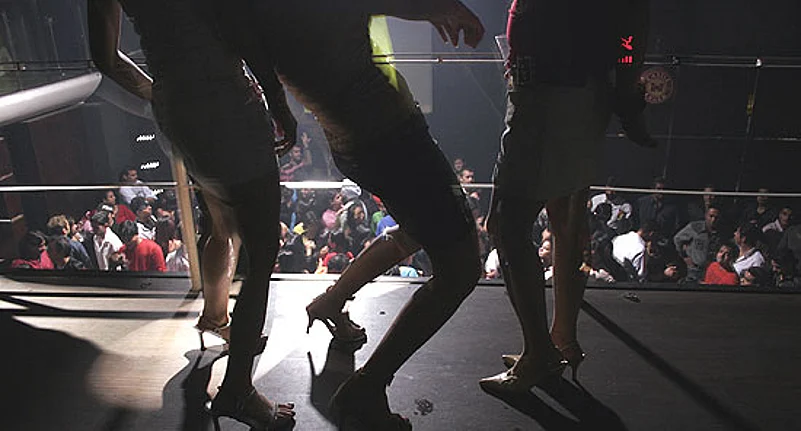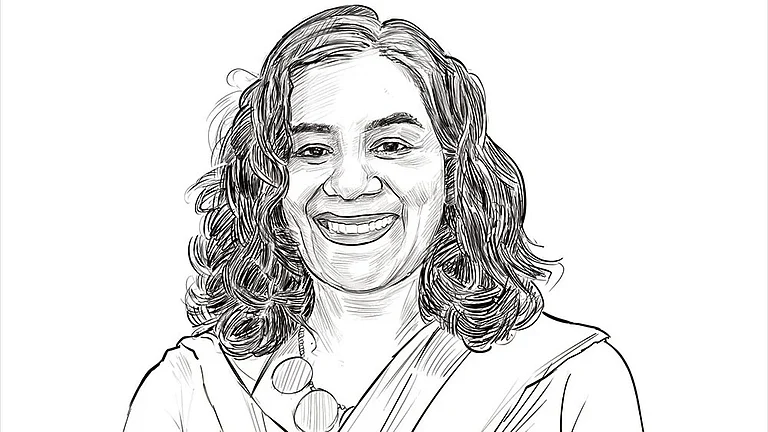In the early days of Doordarshan, we watched everything that was on TV. We watched the swirling ball of the Doordarshan logo take shape every evening at six, accompanied by a mournful jingle. We waited patiently for ‘kendras’ to link and delink, spent several hopeful minutes staring at the ‘Sorry for the Interruption’ sign that appeared with alarming regularity on our screens. We sat through whatever came on: Chitrahaar, Krishi Darshan, Jaan Hai Jahaan Hai, I Love Lucy, Century of Surgeons, Giant Robot.
On Republic Day, we watched the parade. On Independence Day, we listened to the prime minister addressing the nation, always from the ‘ramparts of the Red Fort’. When I finally visited the Red Fort with some cousins and aunts, I spent a lot of time looking for the rampart which I pictured as a bullet-proof enclosure. Not finding it anywhere, I consoled myself by thinking that the rampart was something the PM took home with him after the speech was over, just like a folding chair.
In the eighties, patriotism was very much in the air. I remember going over to the Dixits, neighbours of mine when I was growing up in Allahabad. The five brothers had been trained to jump out of their seats and stand at attention each time the national anthem was on TV. Once the elder one, feeling a tad lazy, delayed standing up until the anthem was almost over. The youngest of the brothers promptly went and squealed to Chachiji who immediately docked five points from the elder one’s account (the family matriarch had formulated a complicated points system, an attempt at disciplining the unruly brood).
The family reinforced the idea of nation and vice versa. That’s how things worked in socialist India. Many of my friends took the NDA exam. The army, of course, also offered the good life. Our cities were dead then, both socially and economically. The army, on the other hand, was an enclosed world of ballroom dancing, cheap liquor and provisions, card games, servants, large houses. What was the cantonment but a giant gated community?
A lot has changed in the last 15 years. The young are working jobs that they would never have dreamed of when they were growing up. And the good life is yours for the taking, as long as you have the money to pay for it. The perks of patriotism don’t seem that tempting anymore. Middle-class kids don’t want to join the army; the Indian army is facing its biggest shortfall of officers since Independence.
Still, it’s not that we have spawned a selfish generation. It’s more that patriotism has a different focus now. The days of nation-building which promoted a kind of bluff patriotism are over now. But more on that in a minute.

Swinging time: This generation moves to a different groove
The young urban Indian spends a lot of time and money celebrating everything from Holi to Valentine’s Day to Gay Pride marches. There’s a party for every occasion; Independence Day now has competition. The young Indian has not forgotten I-Day but she also has other things on her mind. Instead of watching the PM’s speech and the hundredth re-run of Richard Attenborough’s Gandhi, she can get together with friends over a few beers and watch a special I-day episode of Splitsvilla on MTV.
In the predominantly Gujarati suburb of Malad in Bombay, I meet a young ‘traditional-modern’ couple who have thrown a big terrace party to celebrate their first wedding anniversary. The couple cut an eggless cake. There is no alcohol but there is a bottle of pretend bubbly that is uncorked in style. The husband stands around afterwards, bottle in hand, looking like he’s Kapil Dev who has just won the Prudential Cup. All the party games are about money, “Koni paase megzimum credit cards che?” “Koni paase megzimum phoren currency che?”
A month later, I am back in Delhi attending a rave of sorts on the outskirts of town. It’s Holi. In an earlier time, people would have wandered around their neighbourhood in tattered shorts and blotched shirts until the siren went. Here, at this farmhouse rave, there are DJs and recreational drugs and well-behaved yuppies high on LSD and amphetamines and bhang. Somebody passes me a little red star. I swallow it. Someone passes a beer. I take a swig. Thanks, man. No questions asked.
So things are changing, including party games. Traditional festivals like Holi and Diwali are still celebrated but without much religiosity. Money lies at the heart of it.
What do these celebrations mean though? Is it just about spending, showing off and having a good time? Have we forgotten about the simple things that mattered in the past: nation, family, pooja-paath?
Not really. It’s just that there is so much else to celebrate that Independence Day doesn’t have the same resonance it did earlier. It really is just another day, one more party. This does not mean that young Indians are not patriotic; all it means is that patriotism has a different focus now.
The days of bland socialist nation-building are over. The young urban Indian has little time for a nationalism that waves flags and erects statues. She has little patience for phoney patriotism of the right-wing variety. And she expresses herself through a secular activism, a distinctive hallmark of this generation. It’s a more personal, less abstract version of patriotism. It cares more for human rights than for grandiose notions of progress, cultural purity and ancient glory.
So we have young Indians protesting and celebrating on the streets like never before. Whether it is Nisha Susan and the Pink Chaddi campaign, the Gay Pride marches or beating pots and pans on the streets of Bangalore to protest the ban on live music and dancing in nightclubs, young Indians are telling the rest of the country what they want, what being Indian means to them. And now they are voting too; many of my friends in Delhi stayed back in the city on voting day rather than go on an extended vacation. (The 2009 elections witnessed the entry of 4.3 crore first-time young voters.)
This patriotism is bigger and better than the earlier version. It is direct, heartfelt, not imposed from the top. The world has become a more complex place and the patriotism of the young reflects these complexities. We have moved on from Indo-Pak cricket encounters in Sharjah and the kind of base and dangerous patriotism they engendered. And thank god for that.
(The author’s book on young India, The Butterfly Generation, will be published by Rupa next year.)


























